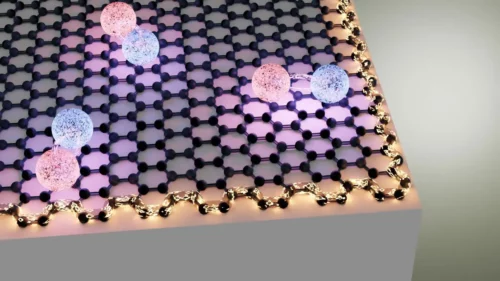Researchers have successfully detected excitons for the first time thus enabling faster processing speed.

Recent advancements in processing technologies have demonstrated how light can be utilized for microprocessors. Adapting these system designs with quantum computing techniques has also been a considerable move in developing faster computational technologies.
A team of researchers at the University of Würzburg have made a breakthrough discovery that paves the way for a new generation of light-driven computer chips and quantum technologies. They have demonstrated the first detection of excitons (electrically neutral quasiparticles) in a topological insulator. “We created excitons by applying a short light pulse to a thin film consisting of just one single layer of atoms,” said Professor Ralph Claessen, quantum physicist from Würzburg and co-spokesperson of ct.qmat.
Excitons are electronic quasiparticles. Although they seem to behave like independent particles, they actually represent an excited electronic state that can only be generated in certain types of quantum matter. They created excitons by applying a short light pulse to a thin film consisting of just one single layer of atoms. Instead of using electrical voltage for exciting atoms, researchers used light which resulted in faster processing speed. They used bismuthene instead of graphene as it had heavier atoms.
Now that the research team has generated excitons in a topological insulator for the first time, attention is being turned to the quasiparticles themselves. Scientists at ct.qmat are investigating whether bismuthene’s topological properties are transferred to excitons. Proving this scientifically is the next milestone that the researchers have their sights on. It would even pave the way for the construction of topological qubits, which are considered particularly robust compared to their non-topological counterparts.
Reference: “Photoswitching fingerprint analysis bypasses the 10-nm resolution barrier” by Dominic A. Helmerich, Gerti Beliu, Danush Taban, Mara Meub, Marcel Streit, Alexander Kuhlemann, Sören Doose and Markus Sauer, 1 August 2022, Nature Methods.
DOI: 10.1038/s41592-022-01548-6






